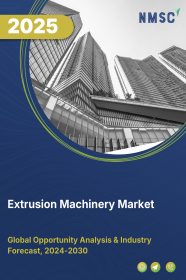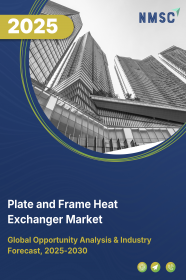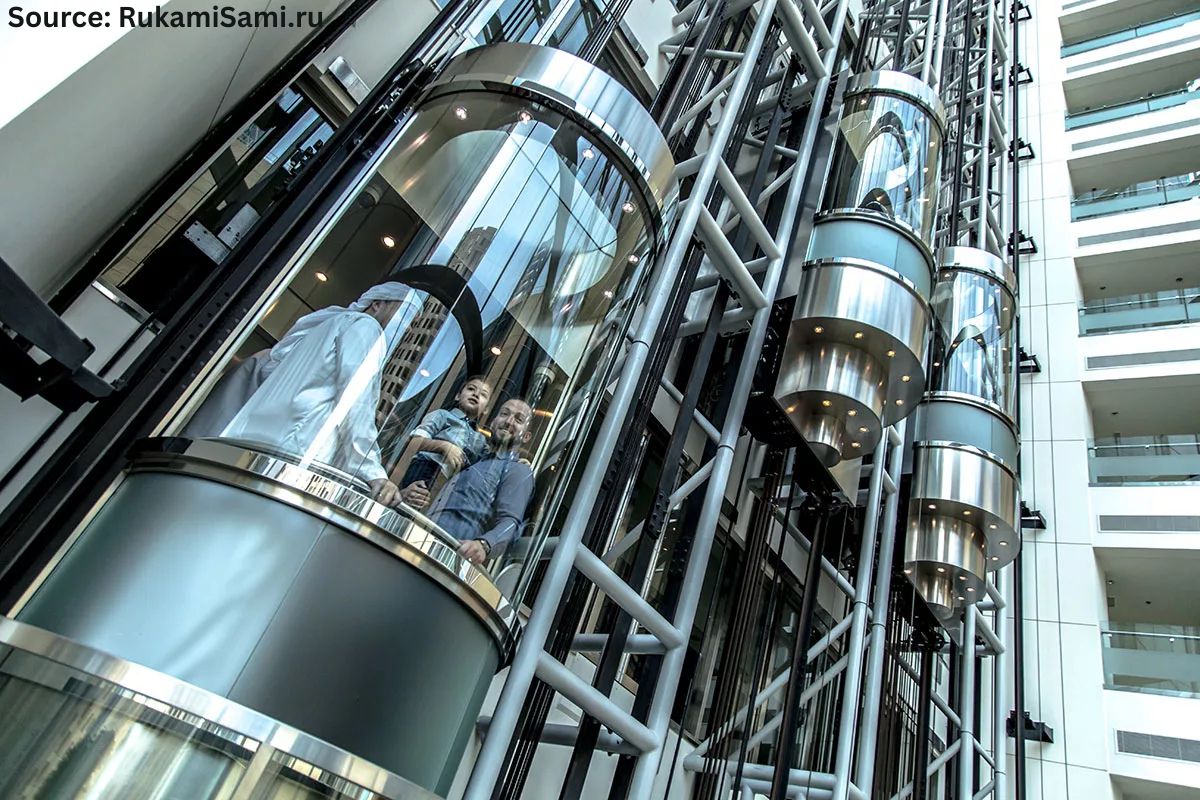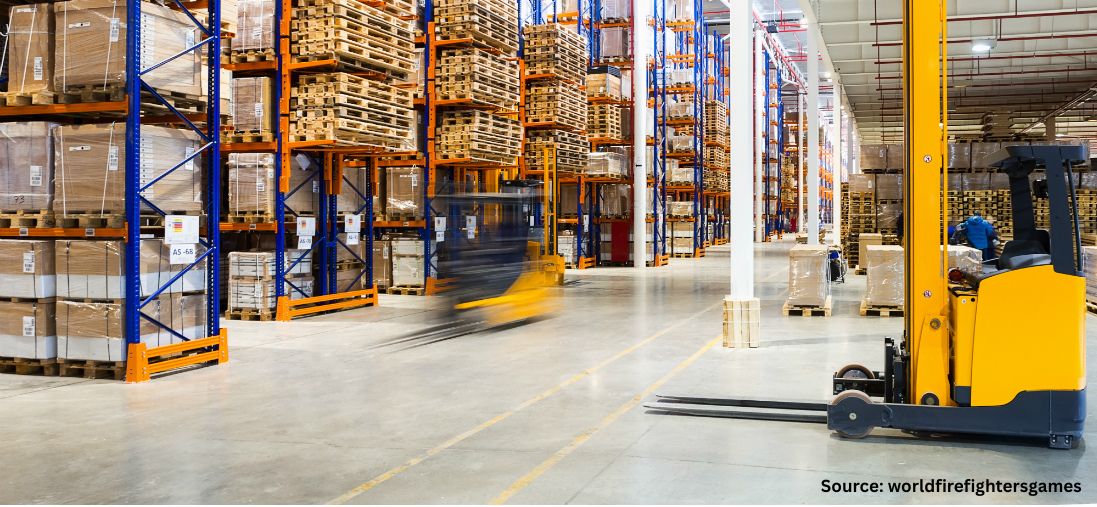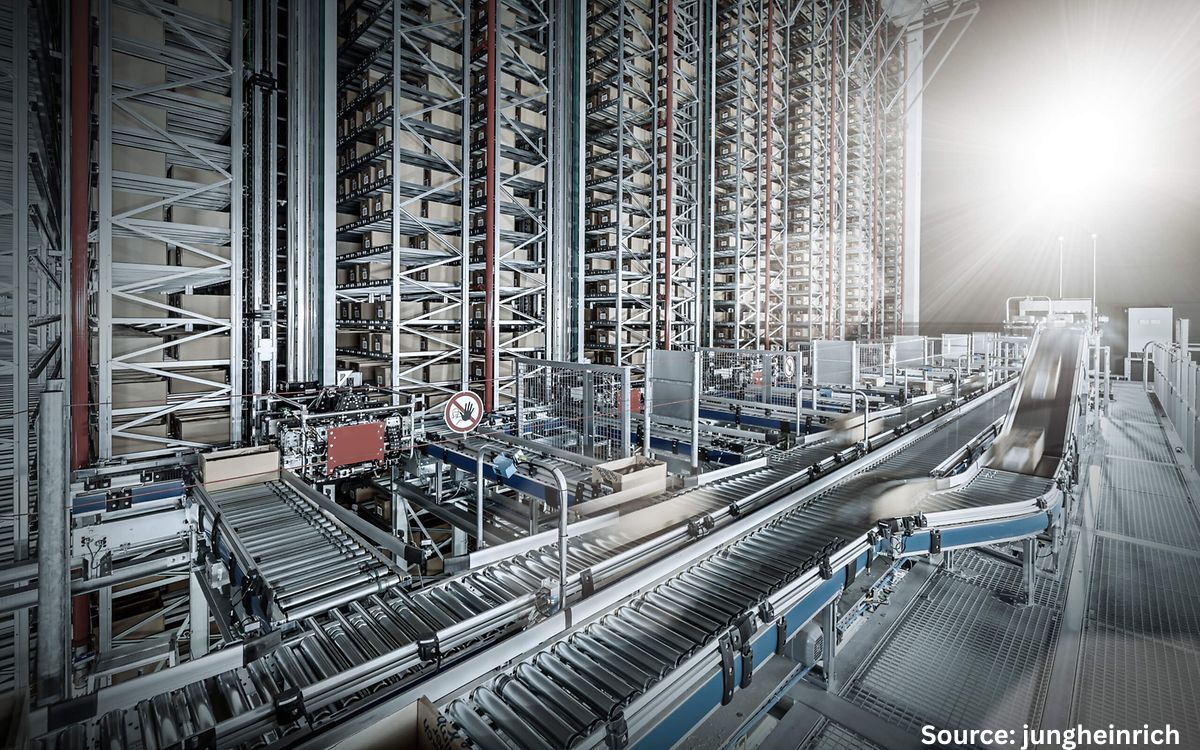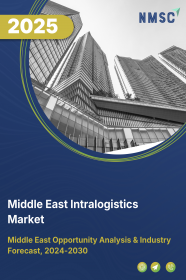
Middle East Intralogistics Market by Component (Hardware, Software, and Services), and by End User Industry (Logistics, Food & Beverages, Retail & E-commerce, Automotive, Chemicals, Pharmaceuticals, Airport, and Mining) – Opportunity Analysis and Industry Forecast 2023–2030
Industry: Construction & Manufacturing | Publish Date: 23-Apr-2025 | No of Pages: 169 | No. of Tables: 123 | No. of Figures: 68 | Format: PDF | Report Code : CM1065
US Tariff Impact on Middle East Intralogistics Market
Trump Tariffs Are Reshaping Global Business
Market Definition
Middle East Intralogistics Market was valued at USD 142.62 million in 2022, and is predicted to reach USD 535.54 million by 2030, with a CAGR of 17.9% from 2023 to 2030. Intralogistics is a vital aspect of supply chain management, and its market is focused on the design, implementation, and maintenance of internal logistics systems. In order to maximise the flow of materials and effectively and economically meet the company's demands, it entails the movement, storage, and management of commodities within an organisation, such as a factory, warehouse, or distribution centre.
The intralogistics market involves the design, implementation, and maintenance of factory and warehouse systems and includes various industries such as manufacturing, retail, e-commerce, and healthcare. Material handling, inventory control, order fulfilment, and reverse logistics are some of the most frequent applications of intralogistics. The intralogistics industry is expanding as a result of rising need for quick and effective delivery, rising demand for automation, and rising demand for sustainable and environmentally friendly solutions.
Fueling Growth in the Middle East Intralogistics Market through Smart Technology and Robotics Investments in Saudi Arabia
The Middle East region includes countries such as Cyprus, Lebanon, Syria, Iraq, Iran, Israel, Jordan, Saudi Arabia, Kuwait, Qatar, Bahrain, UAE, Oman, and Yemen. The growth of the Middle East intralogistics market is being driven by factors such as the rising adoption of smart devices, industrial sensors, and industrial automation motion control systems. In Saudi Arabia, there has been significant investment in the field of robotics and artificial intelligence.
For instance, international businesses declared plans to invest in robots and artificial intelligence in Saudi Arabia in September 2022. The investment is anticipated to expand prospects and enhance the robots and AI sectors, supporting the expansion of intralogistics in this area. Additionally, about 46% of the country’s activities are becoming automated. This high percentage of automation showcases the growing demand and adoption of automated solutions in the region, including the warehouse industry.
UAE's Robotic Renaissance: Government-Led Initiatives Propel Intralogistics Growth Across the Middle East
The government of UAE is playing a major role in promoting the use of robotics and automation processes in several industries. The robotics and automation programme launch in Dubai is driving the growth of the intralogistics market in the Middle East. The Dubai Crown Prince unveiled the programme in September 2022, with the intention of making Dubai one of the top 10 global cities for robotics and automation technologies. The programme will provide up to 200,000 robots over the following ten years.
High Installation Cost of Intralogistics Systems Can Gloom the Market Prospects
The high installation cost of intralogistics systems can be a significant barrier to adoption and can limit the market prospects for these systems. Intralogistics systems typically require significant investments in technology and infrastructure, including specialized equipment, software, and hardware, as well as the cost of installation and maintenance.
Some organisations, especially small and medium-sized enterprises (SMEs), which may have limited resources to invest in these technologies, may find this high upfront cost to be prohibitive. The scale and complexity of the operation, the level of customization needed, and the level of automation requested can all have an impact on how much intralogistics systems cost. As a result, some businesses may opt for less expensive and less efficient alternatives, which can limit the growth and adoption of intralogistics systems in the market.
Unlocking Opportunities: Introduction of Drones in Intralogistics Industry to Create Future Market Prospects
The introduction of drones in intralogistics has the potential to create significant growth opportunities for businesses that rely on efficient supply chain operations. Drones, also known as unmanned aerial vehicles (UAVs), are being used in intralogistics to automate a range of tasks, including inventory management, order picking, and delivery.
Businesses may increase the accuracy and speed of their operations while cutting the time and expense of manual labour and transportation by utilising drone technology. Drones can also increase the flexibility and scalability of intralogistics, allowing businesses to quickly adjust to fluctuations in demand.
Moreover, drones can improve efficiency and reduce the risk of accidents or injuries for workers who might otherwise need to use ladders or other equipment to access these areas. In addition, drones can gather information on inventory levels, product quality, and other key metrics, providing businesses with valuable insights into their operations by using sensors and cameras. This data can be used to optimize processes, improve forecasting, and reduce waste, leading to cost savings and improved efficiency. All these above-mentioned factors are expected to create growth opportunities for the intralogistics market in the near future.
Competitive Landscape
The Middle East intralogistics industry includes several market players such as IntraLogisteX, Conductix, System Logistics S.p.A., KUKA AG, SSI Schafer, Savoye Intralogistics, Falcon Autotech, Kion Group, STILL GmbH, Lodige Industries, BEUMER Group, Noatum Logistics, IFD GmbH, Smartlog Group, Insolog Technologies.
Middle East Intralogistics Market Key Segments
By Component
-
Hardware
-
Automated Storage and Retrieval Systems (AS/RS)
-
Unit-Load AS/RS
-
Mini-Load AS/RS
-
Vertical Lift Modules (VLMs)
-
Carousel AS/RS
-
-
Industrial Robots
-
Mobile Robots
-
Automated Guided Vehicles (AGV)
-
Autonomous Mobile Robots (AMR)
-
-
Conveyor Systems
-
Sortation Systems
-
-
Software
-
Warehouse Management System (WMS)
-
Transportation Management System (TMS)
-
Yard Management Software
-
Inventory Management Software
-
Labor Management Software
-
Others
-
-
Services
By End User Industry
-
Logistics
-
Food and Beverages
-
Retail and E-Commerce
-
Automotive
-
Chemicals
-
Pharmaceuticals
-
Airport
-
Mining
By Region
-
Middle East
-
UAE
-
Saudi Arabia
-
Turkey
-
Rest of Middle East
-
By Region
-
Middle East
-
Saudi Arabia
-
United Arab Emirates (UAE)
-
Israel
-
Qatar
-
Kuwait
-
Oman
-
Other Countries
-
KEY PLAYERS
-
IntraLogisteX
-
Conductix
-
System Logistics S.p.A.
-
KUKA AG
-
SSI Schafer
-
Savoye Intralogistics
-
Falcon Autotech
-
Kion Group
-
STILL GmbH
-
Lodige Industries
-
BEUMER Group
-
Noatum Logistics
-
IFD GmbH
-
Smartlog Group
-
Insolog Technologies
REPORT SCOPE AND SEGMENTATION:
|
Parameters |
Details |
|
Market Size in 2022 |
USD 142.62 Million |
|
Revenue Forecast in 2030 |
USD 535.54 Million |
|
Growth Rate |
CAGR of 17.9% from 2023 to 2030 |
|
Analysis Period |
2022–2030 |
|
Base Year Considered |
2022 |
|
Forecast Period |
2023–2030 |
|
Market Size Estimation |
Million (USD) |
|
Growth Factors |
The rising adoption of smart devices. The increasing government initiatives. |
|
Companies Profiled |
15 |
|
Market Share |
Available for 10 companies |
|
Customization Scope |
Free customization (equivalent up to 80 working hours of analysts) after purchase. Addition or alteration to country, regional, and segment scope. |
|
Pricing and Purchase Options |
Avail customized purchase options to meet your exact research needs. |

















 Speak to Our Analyst
Speak to Our Analyst



